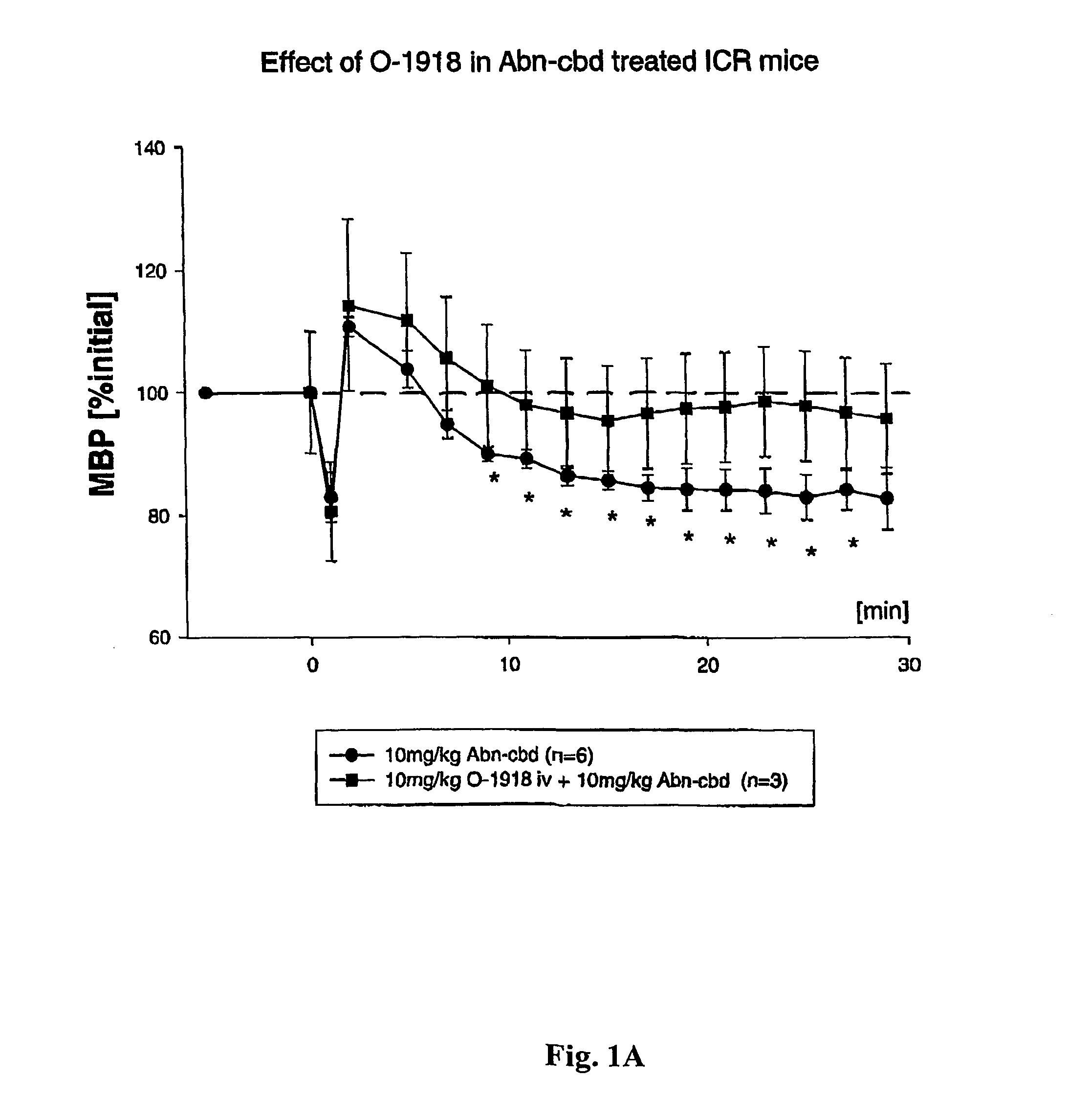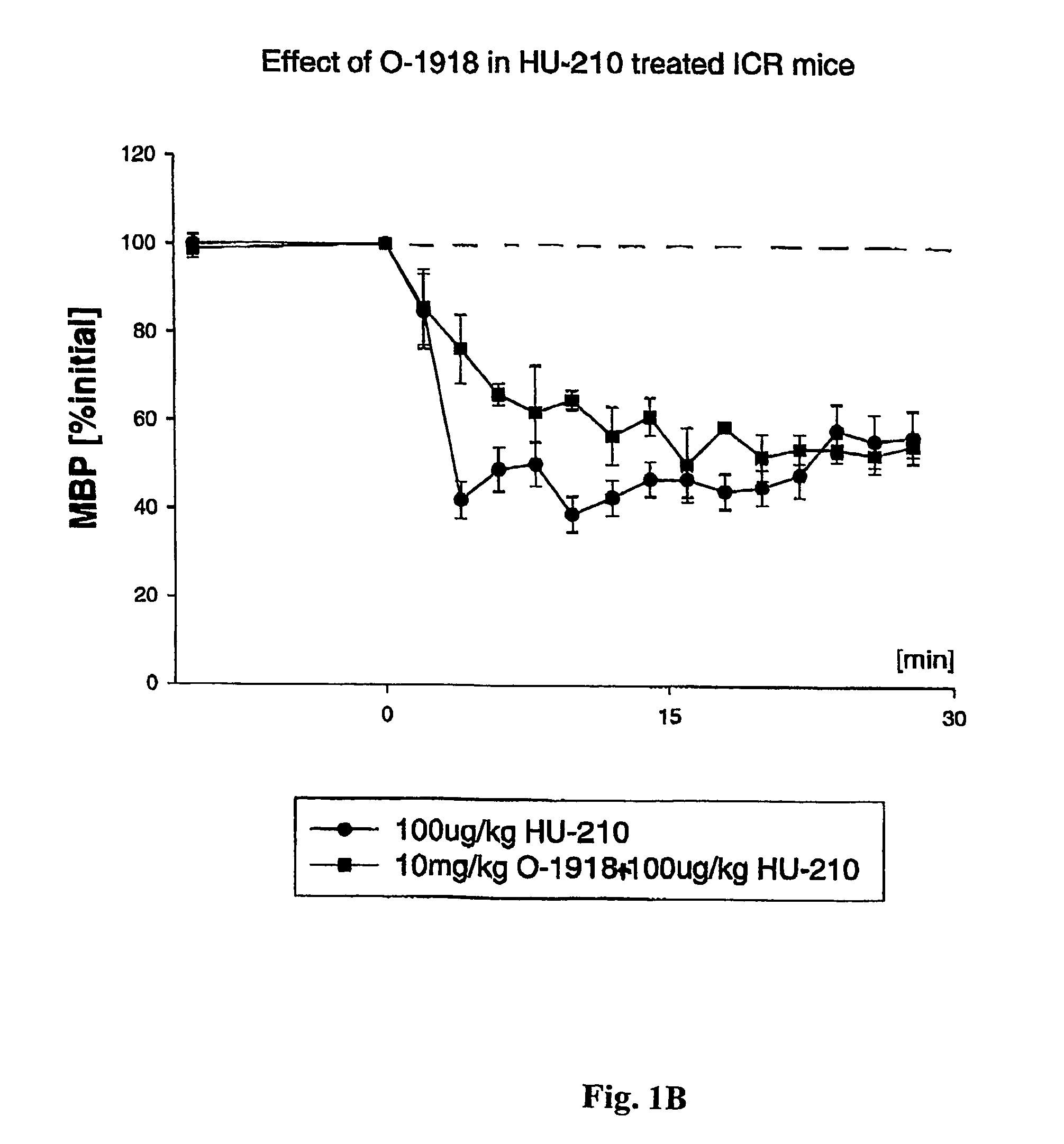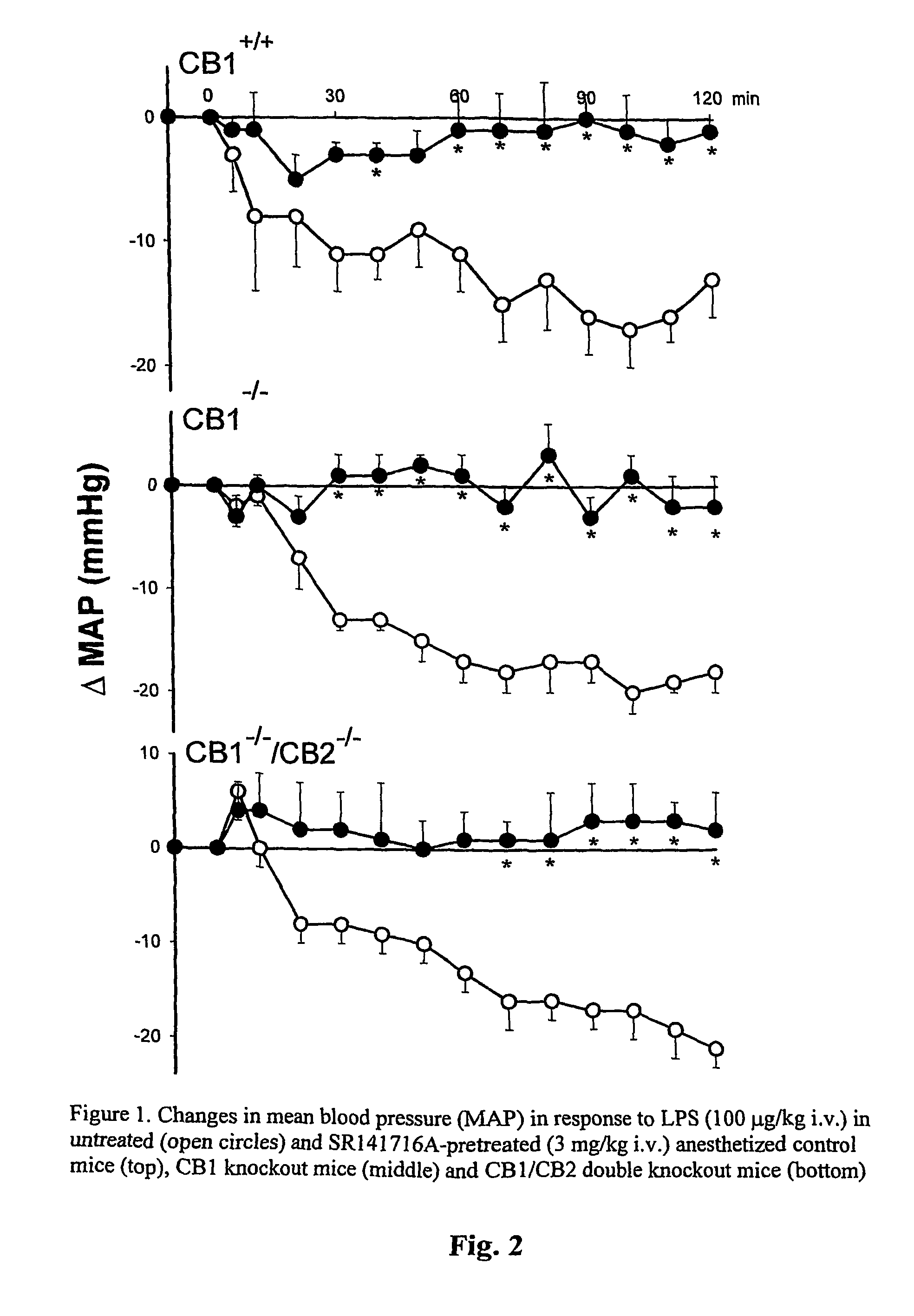Vasoconstrictor cannabinoid analogs
a cannabinoid and vasoconstrictor technology, applied in the field of pharmaceutical compounds, can solve the problems of impaired organ function, inability to sustain normal tissue metabolism, and inability to deliver or uptake oxygen, etc., and achieve the effect of stopping bleeding
- Summary
- Abstract
- Description
- Claims
- Application Information
AI Technical Summary
Benefits of technology
Problems solved by technology
Method used
Image
Examples
example 1
Synthesis of O-1918
[0135]The novel vasoconstrictor cannabinoid analog, O-1918, was synthesized in the following manner. Potassium carbonate and acetonitrile were purchased from Sigma-Aldrich, Co. (St. Louis, Mo.). O-1602 was synthesized as described in International Patent Publication WO 01 / 03690, which is incorporated by reference in its entirety.
[0136]O-1918 was synthesized by adding 0.220 g (1.59 mmol) of dry potassium carbonate (−325 mesh) to a Wheaton-type pressure tube, followed by a solution of (−)-4-(3,3,4-trans-p-menthadien-1,8)-yl-resorcinol (O-1602; 0.090 g; 0.3483 mmol) in 2 ml of dry acetonitrile. An additional 1 ml of acetonitrile was used as washings, which were transferred to the pressure tube. The mixture turned purple. Subsequently, 4 ml of iodomethane was added and the mixture was stirred and heated to 70–80° C. in an oil bath for 16 hours. After cooling, the mixture was filtered and washed with fresh acetonitrile. The filtrate was concentrated on a rotary evapora...
example 2
Effects of O-1918 on Mouse Blood Pressure
[0142]This example illustrates that O-1918 blocks an as-yet unidentified, non-classical (non CB1 / CB2) cannabinoid receptor.
[0143]The endogenous cannabinoid anandamide causes vasodilation in the perfused mesenteric vascular bed of genetically modified mice that lack CB1 or both CB1 and CB2 receptors (Proc. Natl. Acad. Sci. USA, 96: 14136–14141, 1999). In addition, a structurally-modified analog of the plant-derived cannabinoid, cannabidiol, called abnormal cannabidiol (Abn-cbd), does not bind to CB1 receptors, yet it causes hypotension and vasodilation in normal and CB1 / CB2 deficient mice, indicating that it acts as a selective agonist for an as-yet unidentified, non-classical cannabinoid receptor (Ibid).
[0144]By way of example, ICR mice were anesthetized with pentobarbital, and polyethylene cannulae were inserted into the femoral artery and vein for monitoring blood pressure and injecting drugs, respectively. Blood pressure was monitored dire...
example 3
Effects of O-1918 on the Hypotension Induced by LPS
[0145]This example illustrates that O-1918 prevents the hypotension elicited by bacterial endotoxin, by inhibiting a non-CB1 / CB2 receptor.
[0146]The bacterial endotoxin, LPS, elicits hypotension in rats and mice that can be prevented by pretreatment of the animals with SR141716A (Varga et al., FASEB J. 12:1035–1044, 1998). SR141716A inhibits CB1 receptors, but it also inhibits CB1-like, non-classical cannabinoid receptors (Jarai et al., Proc. Natl. Acad. Sci. USA, 96:14136–14141, 1999). LPS causes hypotension, inhibited by pretreatment with 3 mg / kg SR141716A, in wild-type mice and also in mice deficient in CB1 or CB1 and CB2 receptors (FIG. 2). This indicates that most if not all of the LPS-induced hypotension is mediated by non-CB1 / CB2 receptors. O-1918 is a putative antagonist of such receptors, and we tested whether O-1918 inhibits LPS-induced hypotension. Intravenous injection of pentobarbital-anesthetized ICR mice with 100 ng / kg...
PUM
| Property | Measurement | Unit |
|---|---|---|
| diameter | aaaaa | aaaaa |
| chemical structure | aaaaa | aaaaa |
| stereoisomer | aaaaa | aaaaa |
Abstract
Description
Claims
Application Information
 Login to View More
Login to View More - R&D
- Intellectual Property
- Life Sciences
- Materials
- Tech Scout
- Unparalleled Data Quality
- Higher Quality Content
- 60% Fewer Hallucinations
Browse by: Latest US Patents, China's latest patents, Technical Efficacy Thesaurus, Application Domain, Technology Topic, Popular Technical Reports.
© 2025 PatSnap. All rights reserved.Legal|Privacy policy|Modern Slavery Act Transparency Statement|Sitemap|About US| Contact US: help@patsnap.com



